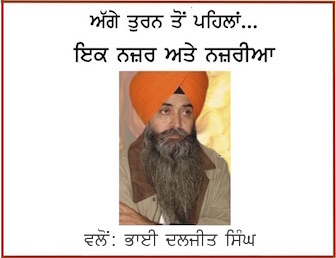Articles/Opinion
Re-Examining History: How India airbrushes its past to whitewash its present
September 12, 2016 | By Garga Chatterjee
by Garga Chatterjee*
In the ever-growing pantheon of Indian nationalist freedom fighters, when there are no more so-called forgotten heroes to add to the list, it becomes necessary to manufacture them.
This was apparent when the Indian government decided to include legendary Mizo hero Pasaltha Khuangchera, who in 1890 had tried to resist a British invasion in present-day Mizoram, in the list of North Eastern freedom fighters to be honoured by the Centre on Independence Day.
This is part of National Democratic Alliance government’s plan to have Union ministers visit sites associated with “forgotten heroes” of India’s struggle for Independence from British rule.
Khuangchera was to be honoured posthumously in a public ceremony in Mizoram’s Ailawng village, attended by Union Minister of State for Railways Rajen Gohain.
Mizos weren’t amused. To register their protest, the assembled in thousands and blocked roads leading to Ailawng till Gohain cancelled the public ceremony and agreed to only privately pay his respects at Khuangchera’s grave.
The NDA’s “forgotten hero” yatra was thus botched – primarily because Khuangchera is not forgotten. Mizos remember exactly who he was, and more importantly, who he was not.
Land battle
Khuangchera was no Indian freedom fighter. There is no evidence to suggest that he had any fraternal feelings towards India as a whole or that he wanted Mizo or Zo country to be ruled from New Delhi.
While others from the so-called Indian mainland wanted to own him after the sudden discovery of his resistance against British invasion, Mizoram’s two biggest student organisations, Mizo Students Union and Mizoram Zirlai Pawl, comprising those who have always known about Khuangchera, issued a joint statement stating what every Mizo was already aware of:
“Khuangchera did not die for India but for the Mizo people. Pasaltha Khuangchera and all other warriors that fought the British were not Indians and they did not fight for India’s freedom. They were the defenders of the Zo country from the invading and occupying force and therefore should not be counted among the freedom fighters for Indian independence. During that time, Khuangchera or any Mizo did not know anything about India, let alone fight for its freedom. Our respected hero is being wrongly portrayed. Khuangchera fought against British expansion and occupation of Zo country, not for the freedom of India”.
Khuangchera and his comrades defended their Zo country against three advancing British forces during the 1889-’90 Chin-Lushai expeditions into present-day Mizoram, parts of Myanmar and other ethnic homeland countries of the region. The invading force largely comprised an assorted set of natives from the mainland, who are today known as Indians.
One of the stated goals of this expedition was to extract the “recognition of British power” from the Mizo people, whose sovereign homeland the British were invading. Zo country, formally incorporated into the British Empire in 1895, was a part of greater Zomi homeland, arbitrarily divided between the Indian Union and Myanmar by British administrative whims. Similarly, the Naga country was randomly divided in 1937 between India and Burma, two pre-1947 British imperial administrative units.
Khuangchera and his comrades were indeed freedom fighters, fighting against losing their freedom to a political entity that would eventually rule them from Calcutta till 1911, and thereafter from Delhi.
Asserting power
On August 15 1947, the British transfer of power meant that the power to rule all lands and peoples whose sovereignty had been destroyed by the British passed on to Delhi’s new rulers.
Having lost their independence as recently as 1890, the memories of the erstwhile sovereign Mizo people must have been fresh during their repeated post-1947 revolts. The Indian Air Force repeatedly air-bombed Aizawl and other parts of present-day Mizoram in 1966. In short, the Air Force bombed humans that it considered to be its own citizens.
This was not exceptional among the native rulers to whom the British had transferred power in 1947. Rulers of Islamabad air-bombed also its own citizens in Balochistan in 1973. Khuangchera had been among the earliest martyrs resisting invasion, but he was not the last.
Kuangchera’s is also not the only case where tags such as “Indian freedom fighter”, drilled into Indian citizens by official textbooks and narratives and repeated ad nauseum, failed to capture complex past realities.
In many other instances, fraudulent claims of Indian official history are at odds with unofficial public knowledge. U Tirot Singh, another so-called forgotten hero who was on the list of 10 North Eastern freedom fighters honoured on Independence Day, fought not for Indian nationalism but to protect the sovereignty of the Khasi country (now Meghalaya) from colonisers.
The idea of India
Much to the central government’s displeasure, many people have steadfastly held on to facts and memories that have been deliberately twisted, suppressed and airbrushed out of the official Indian version of history that exists, among other things, to justify the Indian Union’s present territorial limits and power structures.
Subhas Bose’ Indian National Army, the largest group connected to a pan-subcontinental liberation vision, provides a curious case study.
Various reports surfaced earlier in August about INA veteran Shripatji, now a beggar. Contrast this with One Rank One Pay protests by Indian Army veterans, who get five-figure pensions. Why does an INA veteran not get the same pension as an Army veteran? Notwithstanding their freedom fight, INA isn’t considered a legitimate army by the government of India. It is ironic that when INA was fighting for India’s freedom, the pre-1947 predecessor of Indian Army was fighting against INA’s Indian freedom fighters, to maintain colonial rule.
After August 15, 1947, those who fought for the British against INA freedom fighters became the government of India’s official army, rank and pension protected. To this day, Indian Army cherishes the memory of the exploits of its regiments in assisting British colonial invasion and suppressing native people and their free countries in the subcontinent and beyond.
Uprisings like that of the tribes of Chuars in West Bengal, Santhals in present-day Jharkhand, Kols and Mundas Chota Nagpur and Palaiyakkarars (Polygars) in Tamil Nadu, were as much for freedom from British as they were for freedom from other Indian natives, many of whom constitute the present Indian ruling class.
Official history textbooks want to expand the idea of the Indian nationalist movement far back in time and stretch it in terms of geographical space to suit present political needs. In light of such India-washing of all anti-British freedom fights, one may re-examine the famous war-cry raised by Jhansi’s Rani Laxmi Bai – “mein meri Jhansi nahi dungi (I will not give up my Jhansi)”. There is the tantalising possibility that one the most iconic martyrs of “India’s first war of independence” did not have any concept of the political construct of India for whose independence she purportedly fought. Rani Laxmi Bai, with her militant loyalty to Jhansi, would not have read Sunil Khilnani’s book, The Idea of India.
* About Author: Garga Chatterjee (Dr.) is Assistant Professor, Indian Statistical Institute, Kolkata. He is regular Columnist in newspapers in Bangladesh, India and Pakistan.
To Get Sikh Siyasat News Alerts via WhatsApp:
(1) Save Our WhatsApp Number 0091-855-606-7689 to your phone contacts; and
(2) Send us Your Name via WhatsApp. Click Here to Send WhatsApp Message Now.
Sikh Siyasat is on Telegram Now. Subscribe to our Telegram Channel
Related Topics: Garga Chatterjee, Indian Politics, Indian State




